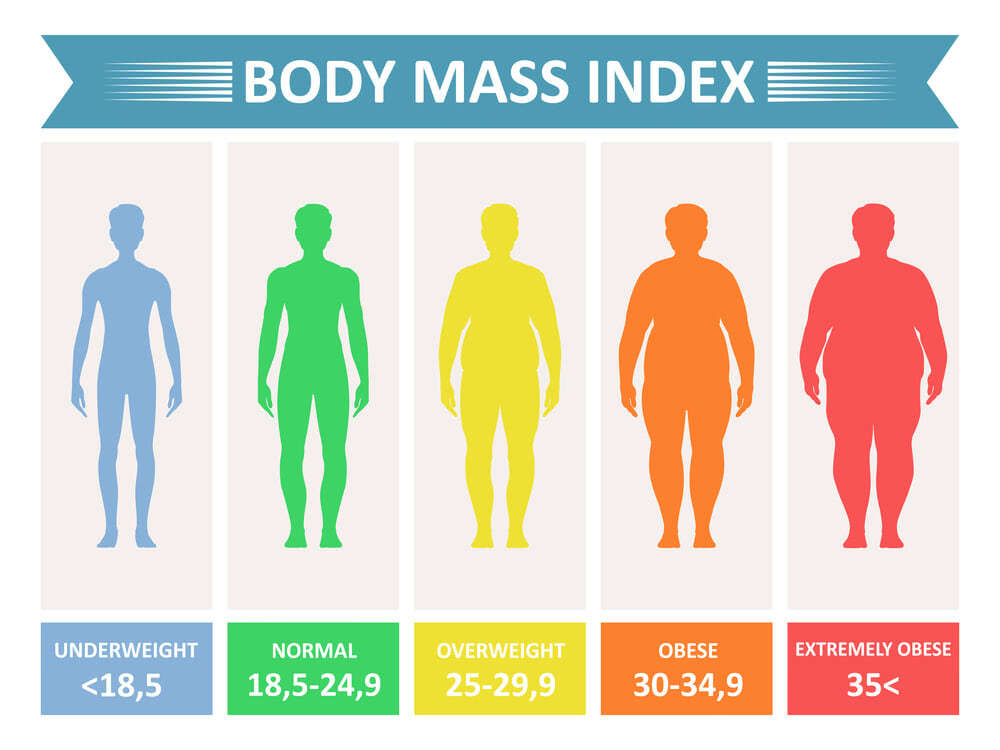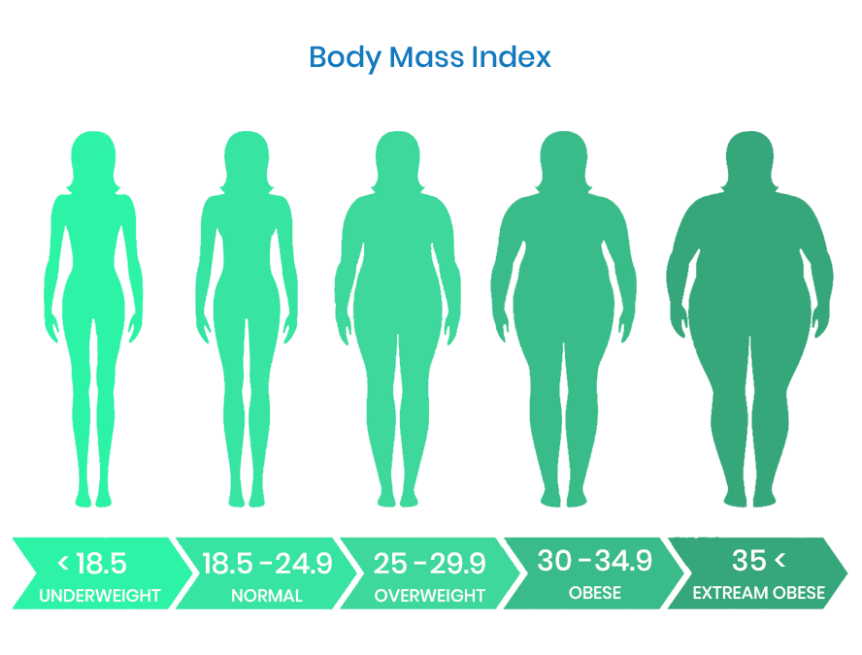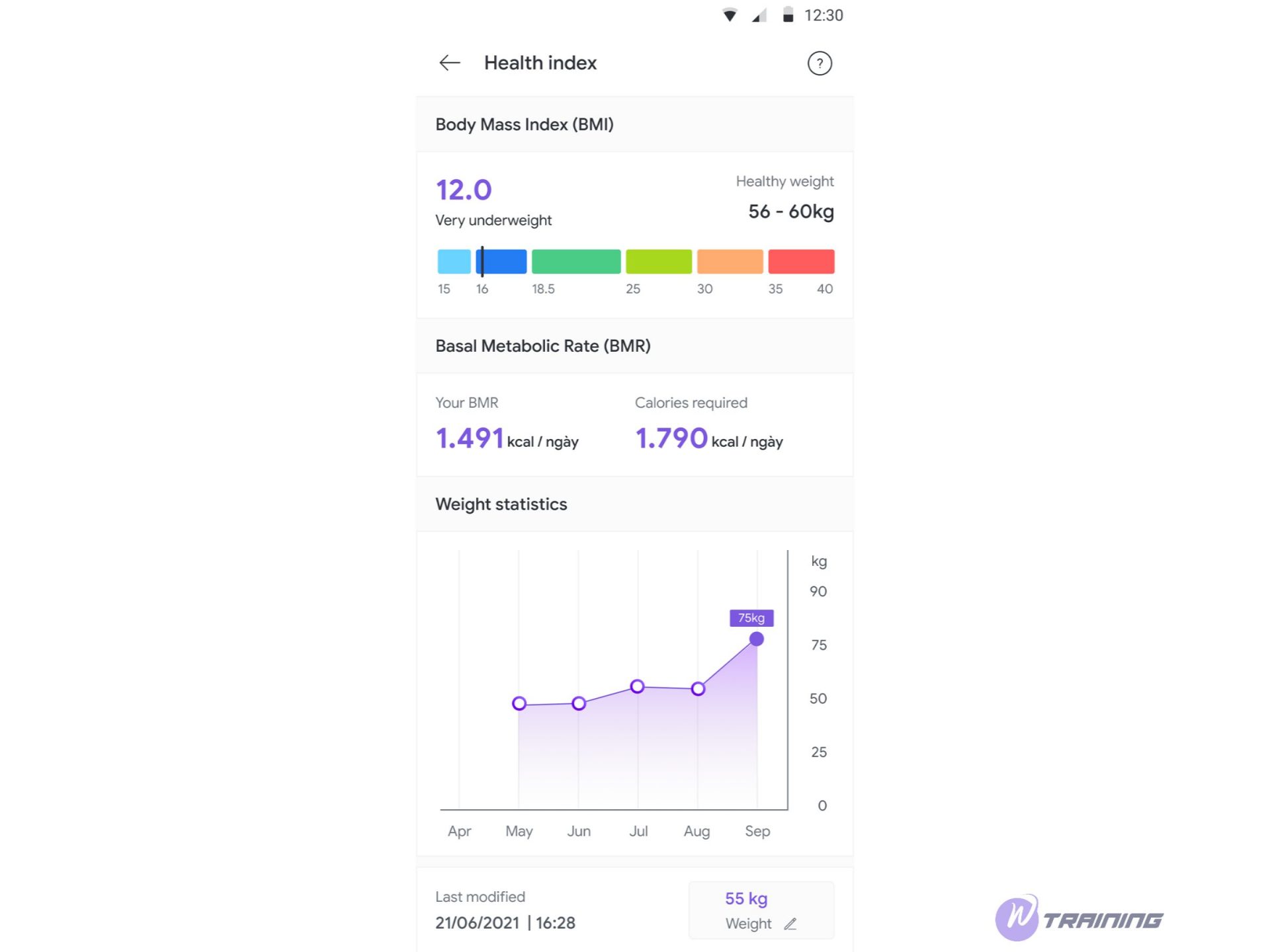Body measurements such as BMI or BMR are both very important to assess someone’s body. Through these indicators, it helps to determine the body’s condition and make appropriate action plans. But not everyone knows how to calculate BMI and BMR. In this article, we will show you how to calculate these two types of metrics.
The definition
1. BMI
BMI stands for “Body Mass Index”, is an index first invented in 1932 by Belgian scientist – Adolphe Quetelet. The BMI formula helps us to determine whether a person’s body condition is underweight, normal, overweight or obese. BMI is calculated based on height and weight and applies to both adult men and women.
Formula to calculate BMI for adults:
| BMI formula |
| BMI = W/ (H²) |
Inside:
- BMI: Body mass index (kg/m2)
- W: Bodyweight (kg)
- H: Height (m)
In addition to the traditional calculation according to the above formula, there are now many apps that you can use to calculate BMI online simply and quickly.
There are slight differences in BMI-based body fitness scales between men and women. As follows:
- BMI for men
-
- Lower than 20: Being underweight, it is necessary to have a suitable diet to improve this condition
- From 20-25: Normal, even in good shape if you regularly exercise and have a reasonable diet
- From 25 to 30: Overweight, it is necessary to take measures to overcome the above situation
- Over 30: Severe obesity, if not improved soon, can have problems related to digestion, cardiovascular system,…
- BMI for women
-
- Under 18: Underweight, undernourished
- From 18 to 23: Normal
- From 23 to 30: Overweight
- Over 30: Obese
Note, however, that this measurement does not include muscle percentage and body fat percentage. Therefore, both BMI and its surrounding estimates are for reference only to find a reasonable training method.
2. BMR
BMR (Basal Metabolic Rate) is understood as the basal metabolic rate of the body. This number tells us the minimum amount of energy (calories) that the body needs to maintain normal activities.
In the state of rest even while sleeping, as well as the activities of the respiratory, circulatory, nervous system and other organs, are still active to maintain life, all activities of The heart, brain, liver, kidneys,… all consume calories, and the synthesis of all the activities necessary to maintain life from within the body (not counting outside movements) are collectively referred to as BMR.
Your BMR depends on several factors such as:
- Body composition
- Age
- Weight
- Sex
- Endocrine
Use an app to figure out how many calories you should be consuming daily, or use the following Harris-Benedict equation to calculate your BMR by hand.
| BMR formula | |
| Women | BMR = 655 + (9.6 x kg) + (1.8 x cm) – (4.7 x age in years) |
| Men | BMR = 66 + (13.7 x kg) + (5 x cm) – (6.8 x age in years) |
3. TDEE
TDEE (Total Daily Energy Expenditure) is the total energy consumed per day. In other words, this is the total amount of energy that we use in 24 hours for all body activities.
TDEE is measured in calories. Eating enough of these calories will help you maintain your current weight. When you want to gain or lose weight, you need to adjust your calorie intake accordingly.
Once you have the BMR, the calculation of TDEE also becomes simpler. The formula is as follows:
| TDEE formula |
| TDEE = BMR x R |
Here, R index is not fixed. It depends on the level and frequency of exercise of each person. As follows:
- No exercise or very little exercise, then TDEE = BMR x 1.2
- Light exercise, be it labor or gentle exercise from 1-3 sessions/week, then TDEE = BMR x (1.3 to 1.4)
- Moderate-intensity exercise, labor or exercise with an average intensity of 3-5 sessions/week, TDEE = BMR x (1.5 to 1.6)
- High-intensity exercise, labor or heavy exercise about 6-7 days/week, then TDEE = BMR x (1.7 to 1.8)
- Very high-intensity exercise with extreme, very heavy training, TDEE = BMR x (1.9 to 2)
Calculating your BMI and BMR to achieve your ideal weight
To keep these two indicators at an ideal level, you need to build a scientific diet and exercise regularly. Regularly monitoring and calculating your BMI and BMR will help you easily determine your body’s proportions and make further judgments.
If you are still wondering between the countless BMI and BMR calculators online, why not give WellTraining a chance?
WellTraining is a running and cycling app for activity tracking. With modern new technology, WellTraining has the ability to calculate outstanding body parameters.
Calculate your BMI and BMR with WellTraining:
Step 1. Download WellTraining to your phone.
Download app here: Android | iOS
Step 2. Enter the necessary figures about your body. Wait for WellTraining for a moment! The health index will be displayed in great detail including:
- Your current BMI and recommended healthy weight.
- Your current BMR and how many calories are required per day.
These calculations can help you get from where you are to as well as where you should be. Let’s get the most precise statistics about your BMI and BMR!
How BMI and BMR are connected
Several factors affect your basal metabolic rate – and body fat composition is one of them. People with more muscle tend to burn more calories at rest because muscle tissue requires more calories to maintain than fat tissue. Although BMI and BMR are not directly related, if you have a high BMI due to a high percentage of body fat, your BMR may be lower. If you have a high BMI due to large muscle mass, your BMR may increase. Also, if you’re overweight but very active, that doesn’t mean you necessarily have a low BMR.
BMI and BMR are guidelines that allow nutritionists and medical professionals to make educated decisions about your body composition and calorie burn, but each should still be considered individually. Check with your doctor or a professional so you can create the most effective eating and exercise plan.
Once you have a clear understanding of both BMI and BMR, you can easily adjust your calorie intake and plan an appropriate exercise to quickly achieve your fitness goals. Good luck!
Read more:
Running Calories Calculator: The Most Accurate Ways to Determine
Running vs Cycling, Which Brings More Health Benefits?











